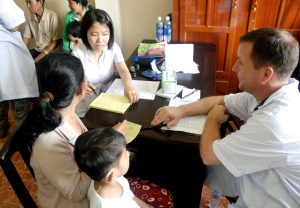 Vietnamese family at a military clinic" width="300" height="208" />
Vietnamese family at a military clinic" width="300" height="208" />
The Family Systems Theory assumes that a family is understood best by examining the family as one whole system. This one system is a complex, deeply-connected changing collection of parts, subsystems and family members, where each member has a known purpose or function. [1]
Other key concepts within the Family Systems Theory include:
Based on this theory, individuals experiencing a crisis or problem are best-served by assessments that include other members of the system as opposed to examining only one family member. [2]
This theory also assumes that families can examine their own processes and set deliberate goals. Change can occur when a family system acknowledges that a particular family pattern is dysfunctional and identifies new processes that support the family’s goals. Resettlement is one example of a large change that a family system may choose or be forced to make.
 Vietnamese family at a military clinic" width="300" height="208" />
Vietnamese family at a military clinic" width="300" height="208" />
In order to assess patterns of adjustment in families that have resettled into a new country, we must examine the structure of the family unit and the processes that occur within that family system.
For example, one study collected data from parents and their children who immigrated to the United States from Vietnam and Cambodia to assess the role of family processes in disagreements over cultural values. The researchers found that cultural clashes were linked to parent-child conflict, which in turn was linked to reduced parent-child bonding, both of which increase adolescent behavioral problems. [3] This demonstrates one family pattern related to resettlement that is best understood at the family system level. [4]